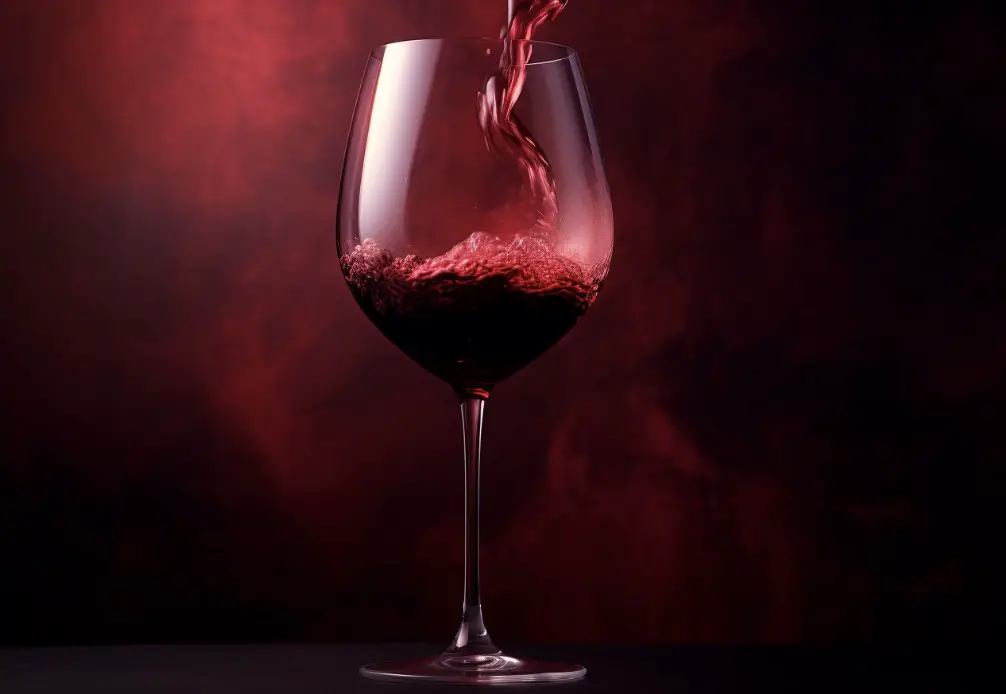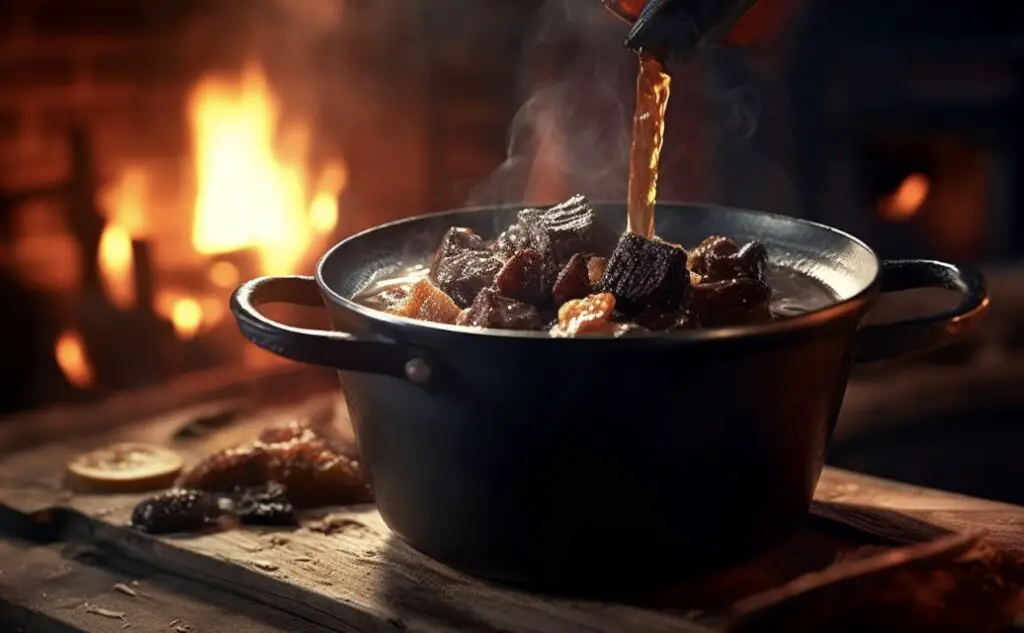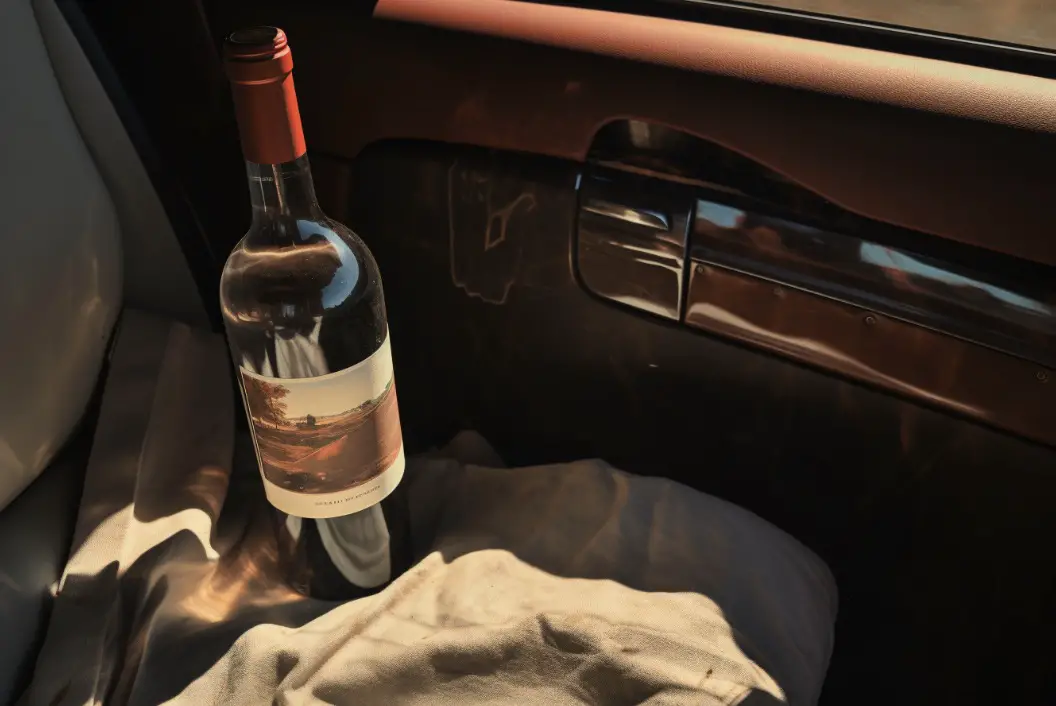Yes, wine does go bad if left in a hot car. The main reason is that heat can cause the wine to age prematurely, which negatively affects its taste and quality.
In this blog post, I will delve into the specifics of why this happens, how you can prevent it, and what you can do if you accidentally leave your wine in a hot car.
As an experienced brewer, I’ve learned quite a lot about this subject through my own mishaps, research, and years of handling and consuming wine.
What Happens to Wine in a Hot Car?
When you leave a bottle of wine in a hot car, the heat can cause the wine to ‘cook’, leading to what is known in the wine world as maderized wine.
Wine is a complex and delicate product that can be greatly affected by external conditions during storage.
Maderized wine has a distinct, flat taste that is often likened to a cooked or stewed fruit flavor. This is far from the intended flavor profile of most wines and is generally considered undesirable.
The heat can also cause the wine to expand, which can lead to seepage or even the cork popping out. This exposes the wine to air, causing oxidation that can further degrade the wine’s quality.
The Science of Heat Damage in Wine
A hot and bright environment can have significant implications for the wine’s chemistry, which can then influence the taste, aroma, and overall quality of the wine. Here’s a detailed look at what happens:
- Temperature Effects:
- Oxidation: Heat accelerates the rate of oxidation. As the wine oxidizes, it can take on a flat or stale taste, losing the bright, fresh fruit flavors and adopting a more “browned” or “cooked” characteristic.
- Expansion and Cork Push: As temperature rises, the liquid wine expands. If the wine is in a bottle, this can put pressure on the cork, possibly causing it to push out or allowing air to seep in, which can further exacerbate oxidation.
- Tartrate Precipitation: High temperatures can lead to the precipitation of potassium bitartrate crystals, commonly referred to as “wine diamonds.” While these crystals are harmless, they can be mistaken for shards of glass by the uninformed consumer.
- Light Exposure:
- Photodegradation: Wine, especially white wine, is sensitive to light, particularly UV light. Prolonged exposure can lead to a fault known as “light strike.” This occurs due to the breakdown of riboflavin and amino acids in wine, producing compounds that can give the wine off-flavors, often described as ‘flinty’, ‘wet wool’, or ‘wet dog’.
- Bottle Color: Darker colored bottles offer some protection from light, but clear bottles or green bottles, especially for white wines, are more susceptible to light damage.
- Evaporation:
- Under high temperatures, there’s an increased likelihood of evaporation, especially if the cork is not perfectly sealed. This can lead to a loss of volatile compounds, thus altering the wine’s aroma and flavor profile.
- Chemical Alterations:
- The reactions between acids, phenolic compounds, alcohols, and sugars can be accelerated by heat. This can alter the wine’s balance, leading to unexpected flavors or loss of intended flavors.
- The polymerization of tannins, which can happen over time and is a desired process in the aging of some red wines, can be sped up in higher temperatures. This might lead to a more mellow wine faster, but it’s an uncontrolled mellowing that may not yield the best results.
- Microbial Activity:
- Elevated temperatures can encourage the growth of unwanted microorganisms if they are present in the wine. This can lead to off-flavors, spoilage, and even wine turning into vinegar if acetic acid bacteria become active.
- Stressed Aging:
- While wine does change over time (a process called aging), the changes that happen under extreme conditions are often called “stressed aging.” In a controlled environment, wine can develop nuanced flavors and greater complexity. However, under stress, it might just degrade without offering any of the benefits of proper aging.
To conclude, storing wine in a hot and bright environment can lead to a variety of chemical changes that mostly degrade the wine’s quality. For this reason, wine aficionados and producers always recommend storing wine in a cool, dark place with a consistent temperature, ideally in a wine cellar or wine fridge.
How Quickly Can Heat Ruin Wine?
The exact time it takes for heat to ruin wine can vary depending on several factors, like the type of wine, the temperature in the car, and how long the wine is left in the heat.

However, it’s generally agreed upon that wine can start to suffer heat damage within just a few hours when left in a hot car.
Personal Experience with Heat-Damaged Wine
I’ve personally experienced the heartbreaking realization of opening a bottle of wine that I’d inadvertently left in my car on a hot summer day. The taste was off, and the wine had lost its vibrant, nuanced flavors. It was a costly mistake that I vowed never to repeat.
How to Prevent Wine from Going Bad in a Hot Car?
The best way to prevent wine from going bad in a hot car is simply to avoid leaving it there. If you’re going wine shopping on a hot day, plan to go straight home afterward. If that’s not possible, consider bringing a cooler or insulated bag to keep your wine cool.
Can You Fix Heat-Damaged Wine?
Unfortunately, once wine has been heat-damaged, there’s no way to fix it. The chemical changes that occur in the wine due to heat are irreversible. However, if the wine is just slightly overheated, it may still be drinkable, though the flavors might be muted or altered.
Using Heat-Damaged Wine for Cooking
While heat-damaged wine may not be enjoyable to drink, you can still use it for cooking. The flavors that are off-putting when drinking the wine might not be as noticeable when used in a sauce or stew.

However, if the wine has a strong, unpleasant taste, it’s best to discard it as it can affect the taste of your food.
Conclusion
To wrap up, wine does indeed go bad if left in a hot car. Heat can cause the wine to ‘cook’, leading to a flat, undesirable taste. It can also cause the wine to expand, potentially leading to seepage or the cork popping out. Once wine has been heat-damaged, there’s no way to reverse the damage, but it may still be usable for cooking.
Here are some key facts to remember:
1. Heat can cause wine to ‘cook’, leading to a flat, stewed fruit flavor.
2. Wine can start to suffer heat damage within just a few hours in a hot car.
3. Heat can cause the wine to expand and the cork to pop out, exposing the wine to air and causing further damage.
4. The damage done to wine by heat is irreversible.
5. Heat-damaged wine may still be usable for cooking, unless it has a strong, unpleasant taste.
Personally, I’ve learned my lesson the hard way and now take extra precautions when transporting wine, especially during the hotter months. It’s better to be safe than sorry when it comes to preserving the quality of your wine.
FAQs
How can you tell if wine is heat damaged?
You can determine if wine is heat damaged by examining its color, aroma, and taste. Heat-damaged wine may have a brownish hue instead of its usual vibrant color. The aroma might be flat or stewed, lacking the usual fruitiness or complexity. When tasting, heat-damaged wine can have a cooked or caramelized flavor, with diminished freshness and balance. These signs indicate that the wine has been adversely affected by excessive heat.
Can bottles of wine sit in a hot car?
Yes, bottles of wine can sit in a hot car, but it’s not ideal. The heat can potentially damage the wine’s flavor and quality. It’s best to avoid exposing wine to high temperatures for extended periods, as it can accelerate the aging process and spoil the taste.
How long can wine be left in a hot car?
Leaving wine in a hot car for an extended period is not recommended. The extreme heat inside a car can potentially damage the wine, causing it to spoil or age prematurely. It is best to avoid exposing wine to high temperatures for prolonged periods to maintain its quality and taste.
How can you tell if wine is damaged?
You can determine if wine is damaged by examining its appearance, smell, and taste. Look for any discoloration, cloudiness, or sediment in the wine, as these can indicate spoilage. Smell the wine to detect any off-putting aromas like vinegar, mold, or a musty odor. Finally, taste the wine to check for any unpleasant flavors such as bitterness, sourness, or astringency. If any of these indicators are present, it suggests that the wine may be damaged or spoiled.
Will a bottle of wine bust in a hot car?
Yes, a bottle of wine can potentially break in a hot car. The high temperatures can cause the wine to expand, putting pressure on the bottle and potentially causing it to crack or shatter.
Is it bad to leave a bottle of wine in a hot car?
Yes, it is not ideal to leave a bottle of wine in a hot car. The heat can negatively affect the quality of the wine, potentially causing it to spoil or age prematurely.




